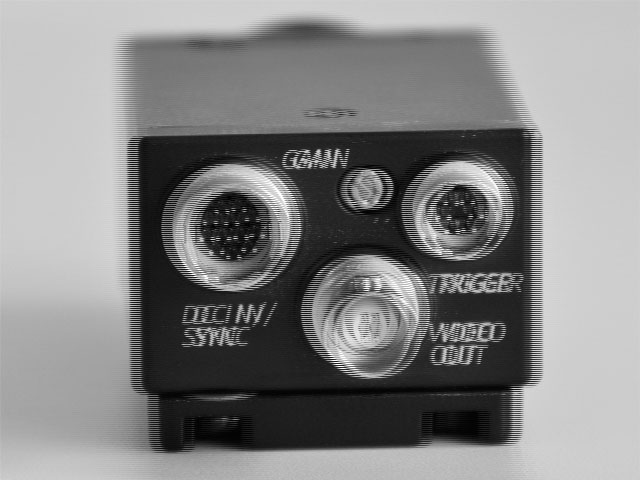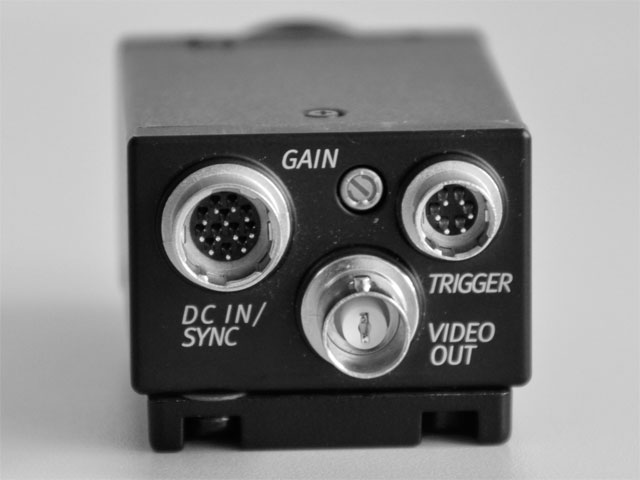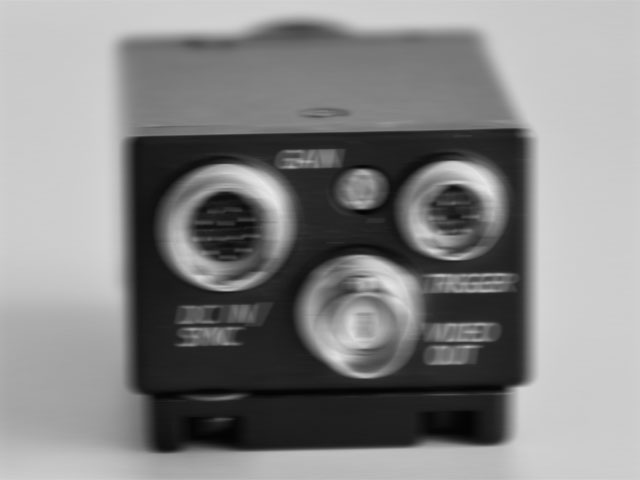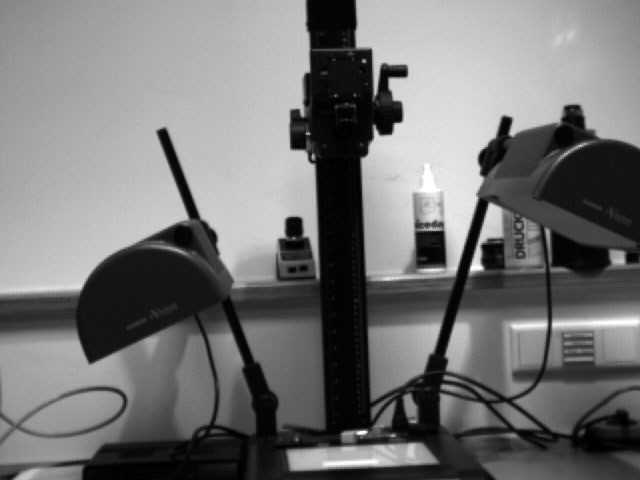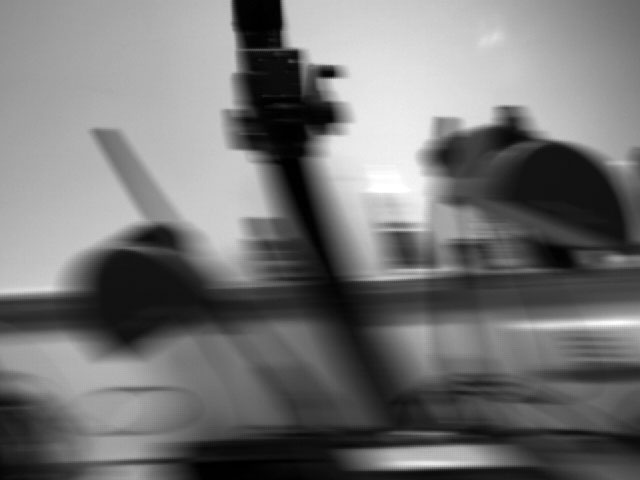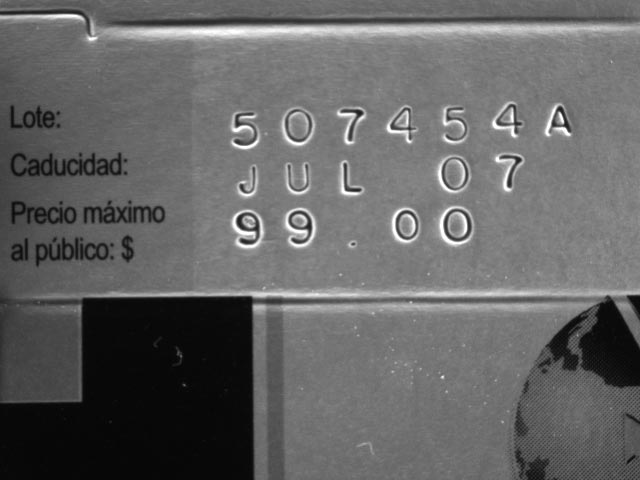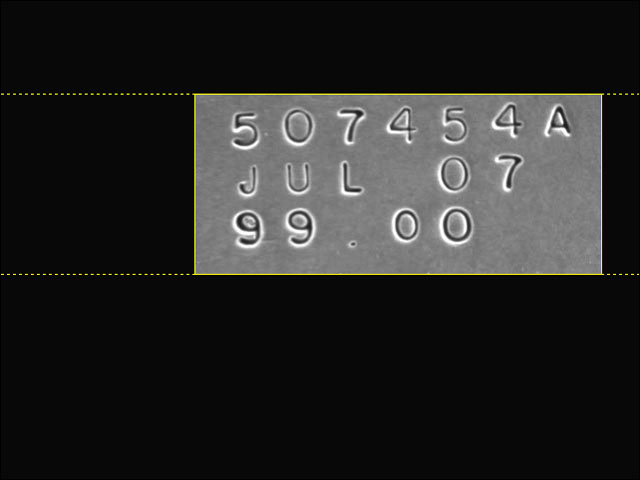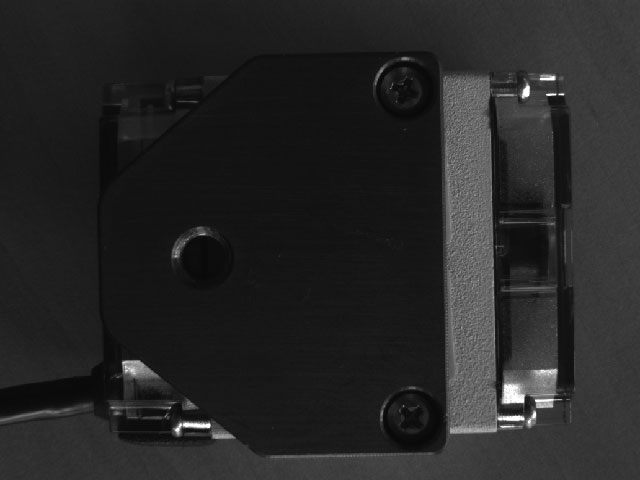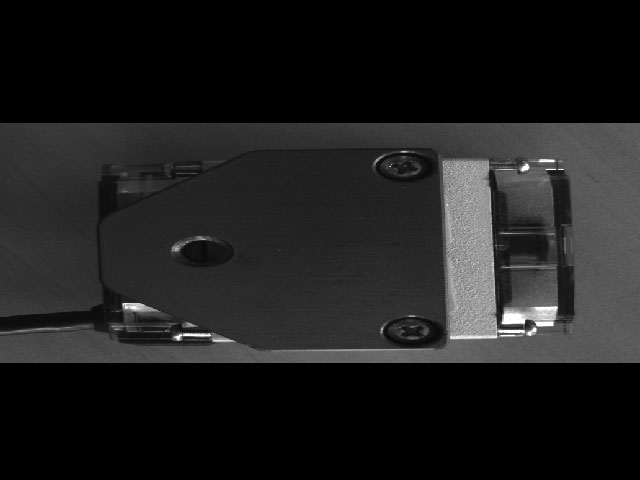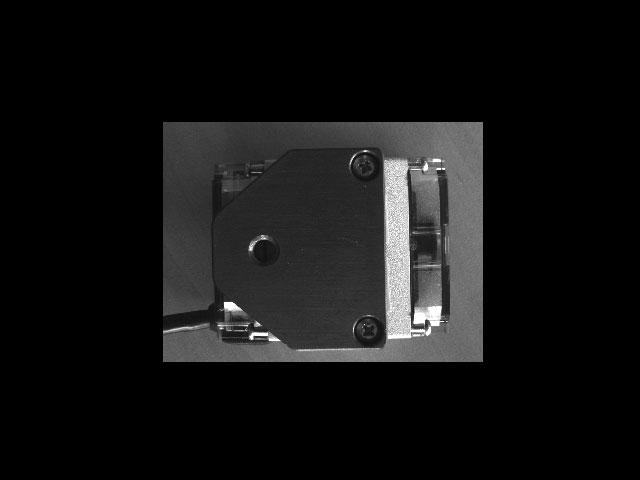Electric readout functions
Frame rates
The frame rate (fps = frames per second) indicates how many images can maximally be read out electronically by the camera. A prerequisite is, however, that the exposure time is correspondingly short.
Particularly CCD sensors cannot be read out at any random speed. As any image information is digitalised via a central A-D element, this makes very high demands for the electronics. The pixel clock of modern CCD sensors is 20 to 75 MHz. Even higher frame rates for CCD sensors can only be achieved by reading out two or four sensor portions (taps) in parallel. Known for particularly high frame rates are CCD cameras with TrueSense (Kodak) sensors (KAI 340, KAI 1020, KAI 1050, KAI 2050, etc.).
Extremely high frame rates can be realised using CMOS cameras, as in this case the pixels are not read out by means of a central A/D converter but are directly read out and amplified using 3 to 5 capacitors around the individual image pixel. Theoretically, the frame rate of the camera is many times higher here.
Interlaced / non-interlaced images
Analogue monochrome cameras which work according to the TV standard RS170 or CCIR as well as colour cameras according to the NTSC or PAL standard do not generate full frames. This method, with which "classic TV images" are transmitted, is based on the transmission of two half frames. In this case, the first half frame captures and transmits the odd, the second half frame the even image lines. For synchronisation, vertical and horizontal sync signals are additionally transmitted, which make the succession of lines and half frames discernible. In case of an interlaced camera, the images are not only transmitted in two halves, but also read out from the sensor in this manner.
Interlaced Readout
Progressive Scan
If the camera is moved during the interlaced image acquisition, typical image stripes (comb effect) are generated in addition to the motion blurring, as the two half frames are captured chronologically and therefore contain different image information.
The interlaced image acquisition and transfer method is normally not used any more in today's digital industrial cameras and intelligent camera systems. Yet many existing machine vision applications with interlaced cameras in TV resolution are still in use.
Modern "progressive scan" industrial cameras (many analogue cameras, too!) provide the user with full frames which are captured and transmitted at the same time. In case of fast object movements, they display no more than motion blurring effects. The required exposure time to avoid this effect can be calculated by means of the online wizard.
CCD or CMOS cameras with global shutter
State-of-the-art CCD sensors and some CMOS sensors can expose all pixels at the same time and then read them out. This is referred to as "global shutter" (camera shutter) which does no longer work mechanically but "electronically".
The functional principle of the electronic global "shutter" is the most widely used method for CCD sensors. Sensors with electronic global shutter simultaneously empty all pixel charges. Using these so-called "interlaced transfer CCD sensors", the image is captured simultaneously, buffered in additional, unexposed lines between the actual pixel lines and then read out pixel by pixel. CMOS sensors, too, buffer the brightness information by means of additional capacitors in order to read out the sensor piece by piece.
The captured image appears sharp as still and moving image in this way if the exposure time was short enough. If this is not the case, the image information is blurred if the integration time is too long and camera or object is moved at the same time. The required exposure time for sharp images can be calculated in a simple way.
Global Shutter (non moving)
Global Shutter with motion blur
CMOS cameras with rolling shutter
A simplified, cheap method to read out CMOS sensors is the "rolling shutter" principle. The sensor is read out line by line in succession from top to bottom and equally continuously exposed anew, as the pixel information cannot be buffered on the CMOS sensor. In addition to a lower production effort, the image quality of rolling shutter sensors can be somewhat better than that of global shutter CMOS sensors, as more light-active space is available for the sensitive pixels.
Cameras with rolling shutter can therefore not capture moving images if the illumination is not in the form of an extremely short flash. A typical image effect is the shifting of image edges across the direction of movement. In the lower right image example, the camera was still (tripod rod still vertical and sharp), then the image is shifted and because of the excessive exposure time, it is additionally smeared by the motion blurring.
Rolling shutter still image
Rolling shutter with motion
In the right image example, the camera was still (tripod rod still vertical and sharp), then the image is shifted diagonally line by line due to the camera movement and because of the excessive exposure time, it is additionally smeared by the motion blurring in one image line.
Partial scan
In this camera mode, only a part of the sensor image is read out. This can sometimes only be one image stripe (for example, 1/2, 1/4 or 1/8 of an image) or sometimes a freely selectable image detail. By capturing a partial frame of lower size, the camera can capture more images per second without exceeding the maximum data rate of the device. Depending on the readout method, the frame rate is accelerated as a percentage of the entire surface reduction.
Full image
Partial scan
Nevertheless it is relevant for many CCD sensors how many whole lines are sent, as these must be read out completely. Leaving out pixels on the right and left in one line does not have any speed advantages for the image refresh rate.
CMOS cameras are typically not affected by these restrictions. As each pixel is surrounded by its own signal converter, these sensors can be read out simultaneously in an extremely fast way. In an ideal situation, even a multi-frame readout with different exposure times, etc. is possible.
Binning
If a camera is operated in binning mode, neighbouring pixels are added as a signal and transmitted. The pixel binning can be done horizontally, vertically or in both directions.
Example: no binning, Y-binning, X+Y binning
No binning
Vertical binning
Binning in X & Y
Multi taps
Sensors with a particularly high resolution, like line scan camera sensors but also special area scan camera sensors, can be "tapped" several times for accelerated readout. The signals are evaluated via two or more different A-D converters and transmitted separately.
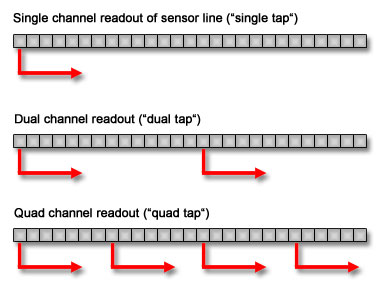 |
Especially in case of CCD cameras, the frame frequency can be increased in this way. Please do perform a bright image and dark image calibration, as no A-D converter is really identical. Without balancing, a clear grey shade edge could be visible in the image between the individual readout zones.
CMOS sensors are "multi-tapped" to the extreme. Here each pixel is read out directly therefore especially high frame rates can be achieved. Due to these many signal converters, the uniformity of the images is not as high as when using a CCD sensor which is mainly read out via one channel, rarely also via several channels.




